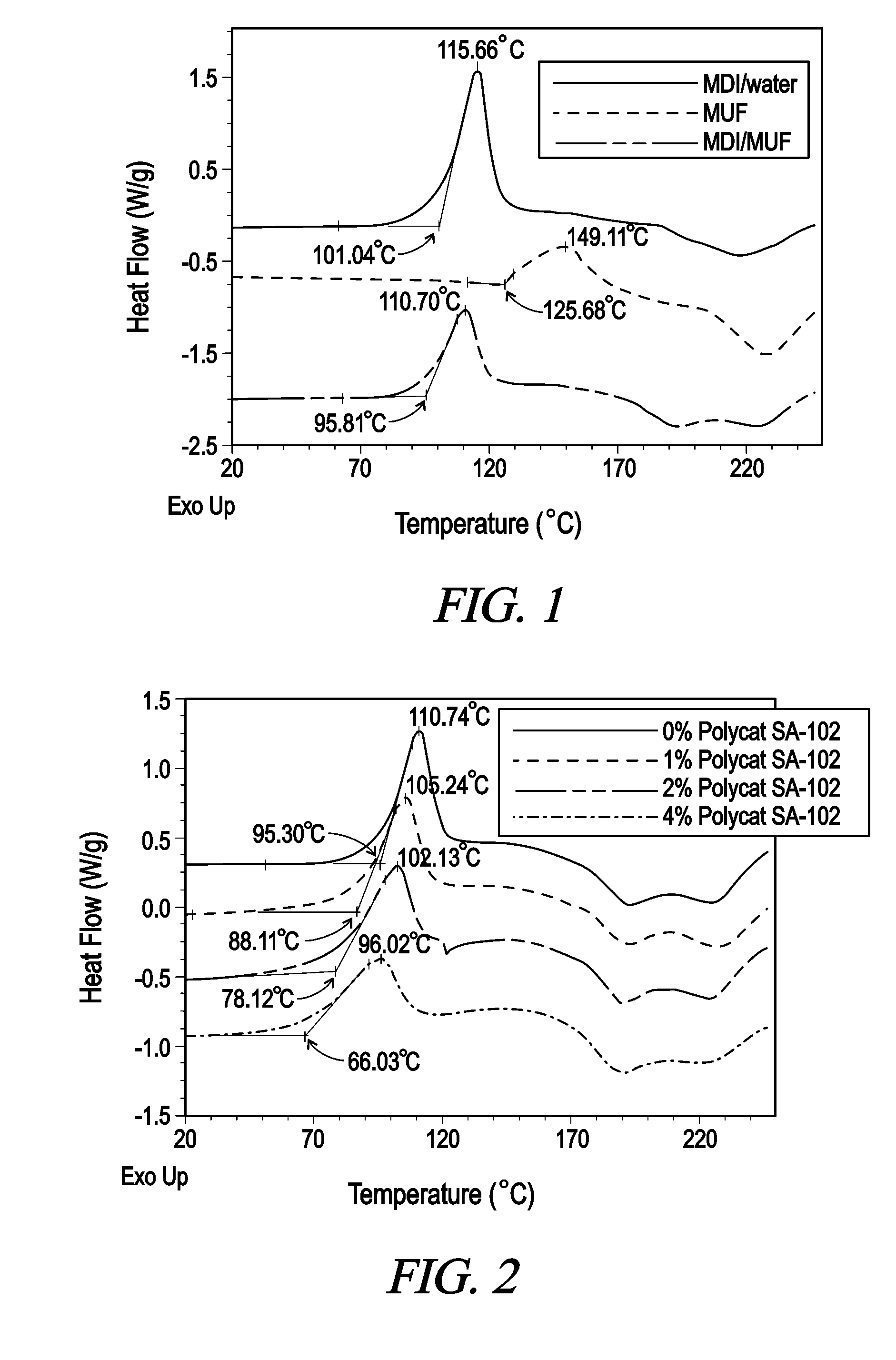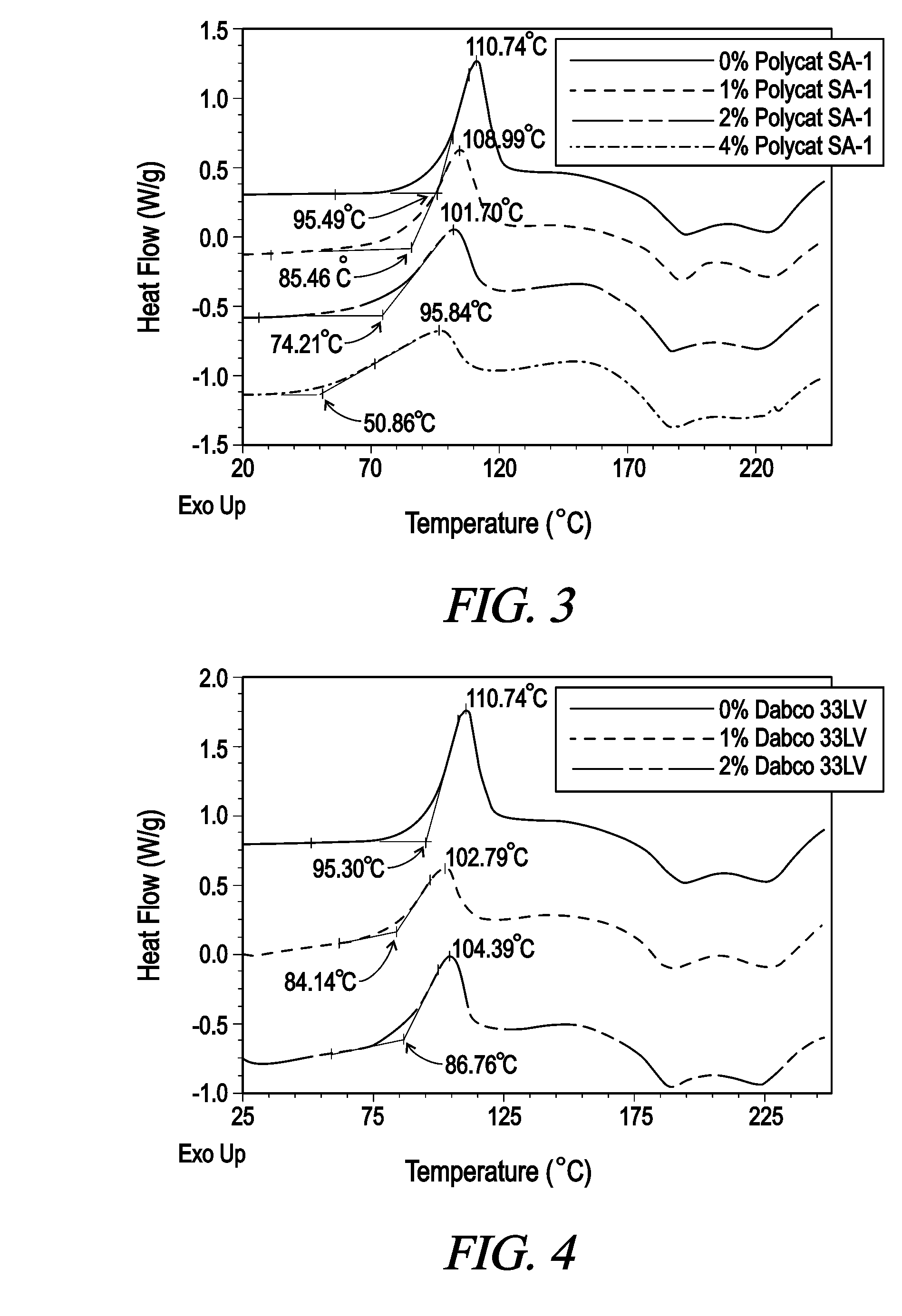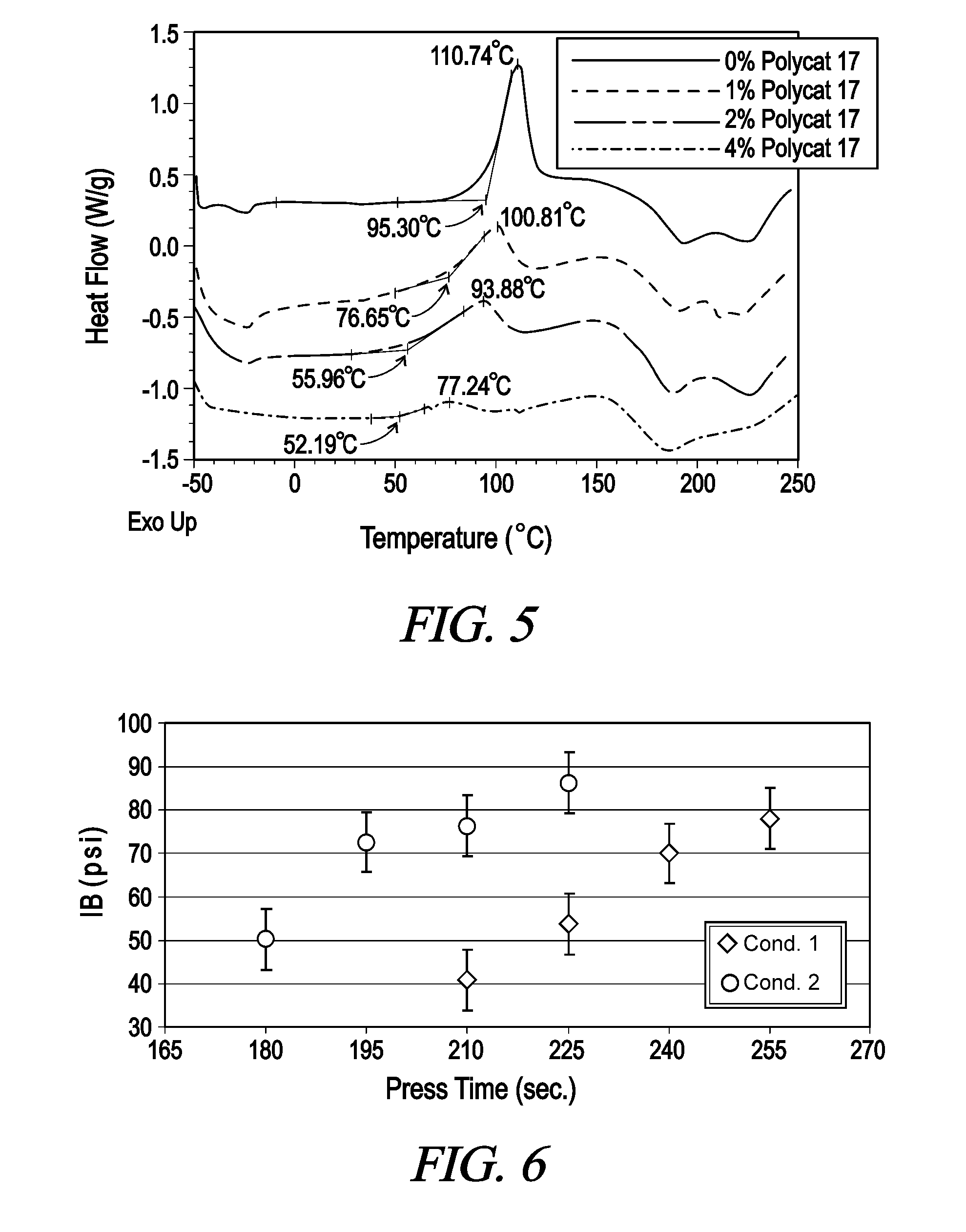Catalyzed Isocyanate Adhesive System For Wood Composites
a technology of isocyanate and adhesive system, which is applied in the direction of transportation and packaging, wood layered products, synthetic resin layered products, etc., can solve the problems of increasing mill emissions, unable to provide sufficient speed or press temperature conditions for art adhesive systems, and unable to reduce mill emissions, so as to improve the process of creating wood-based composite materials and cure faster and faster
- Summary
- Abstract
- Description
- Claims
- Application Information
AI Technical Summary
Benefits of technology
Problems solved by technology
Method used
Image
Examples
example 1
[0045]FIG. 1 illustrates a Differential Scanning Calorimetry (DSC) Scan for the combinations of methylene diphenyl diisocyanate (MDI) with water, MDI and urea formaldehyde and MDI and melamine-urea-formaldehyde. The graph illustrates that the MDI / MUF combination cures at a lower temperature than either MDI alone or MUF alone. This graph generally demonstrates the curing of an adhesive system, an isocyanate polymer and an amino resin, though notably, does not include an isocyanate catalyst as does the adhesive system of the present invention.
[0046]Referring now to FIG. 2-5, there are graphs of DSC Scans demonstrating the effects of various catalysts on the cure rate of the adhesive system of the present invention. In each of the adhesive systems containing zero percent catalyst, the corresponding curve is almost identical to the MDI / MUF combination in FIG. 1 as would be expected. With the increasing amount of catalyst added to the MDI / MUF combination, a lower reaction temperature for...
example 2
[0048]Three-layer strand boards are made as follows. The surface layers constitute 60% of the total board weight, while the core layer constitutes 40% of the weight. Southern Yellow Pine strands are obtained from an OSB mill. The strands are screened and dried to 9-11% moisture content, and then blended with a pMDI resin (with and without an accelerator) and a wax emulsion. Wax is added at 0.7% rate, based on oven-dried wood weight. The resin and accelerator application rates (based on oven-dried wood weight) are shown in Table 1. In condition 2, the core accelerator is a mixture of a MUF resin and a catalyst (Polycat® SA-102 from Air Products).
TABLE 1Condition #Face ResinCore ResinCore Accelerator12% pMDI2% pMDINone22% pMDI2% pMDI0.3% MUF w / SA-102
[0049]The boards are pressed at 330° F. for various press time to a target density of 40 pcf and a target thickness of 23 / 32″. The boards are then tested for internal bond (IB) strength. The results are shown in FIG. 6. The results demons...
PUM
| Property | Measurement | Unit |
|---|---|---|
| density | aaaaa | aaaaa |
| temperature | aaaaa | aaaaa |
| thermosetting | aaaaa | aaaaa |
Abstract
Description
Claims
Application Information
 Login to View More
Login to View More - R&D
- Intellectual Property
- Life Sciences
- Materials
- Tech Scout
- Unparalleled Data Quality
- Higher Quality Content
- 60% Fewer Hallucinations
Browse by: Latest US Patents, China's latest patents, Technical Efficacy Thesaurus, Application Domain, Technology Topic, Popular Technical Reports.
© 2025 PatSnap. All rights reserved.Legal|Privacy policy|Modern Slavery Act Transparency Statement|Sitemap|About US| Contact US: help@patsnap.com



